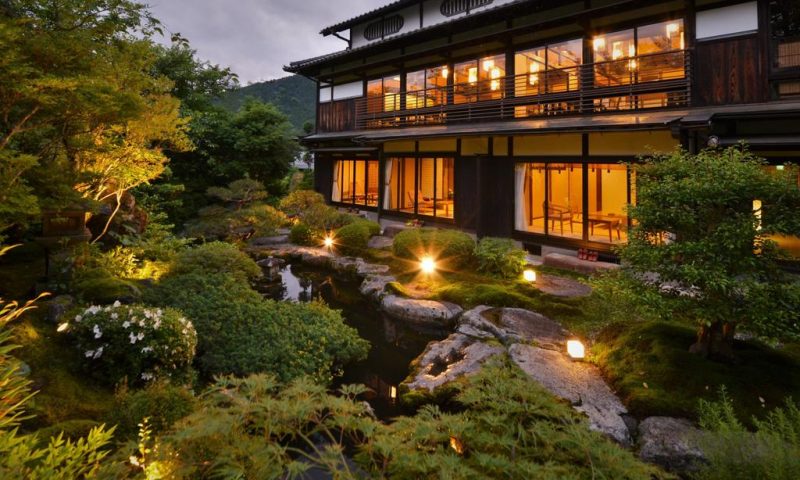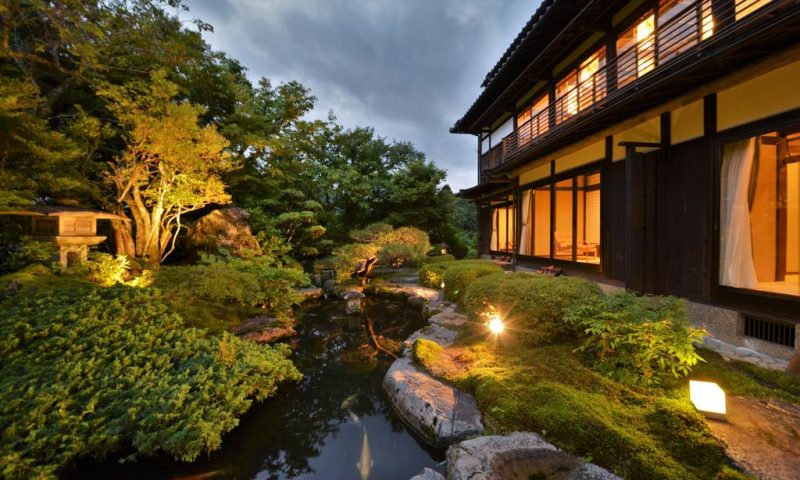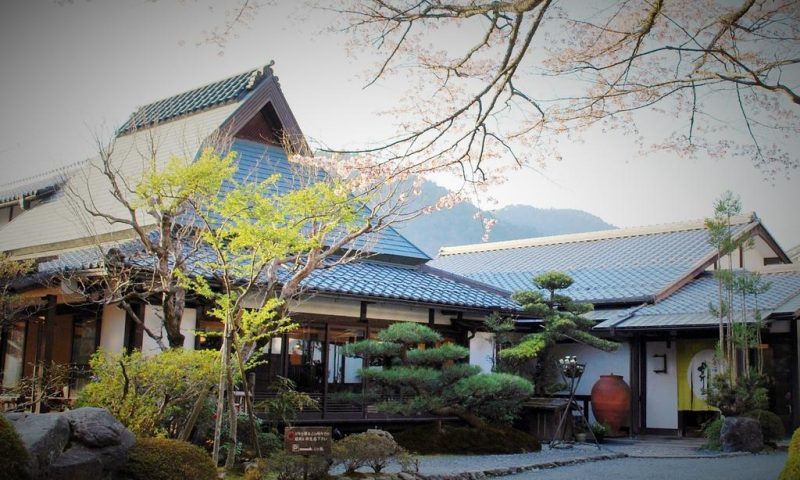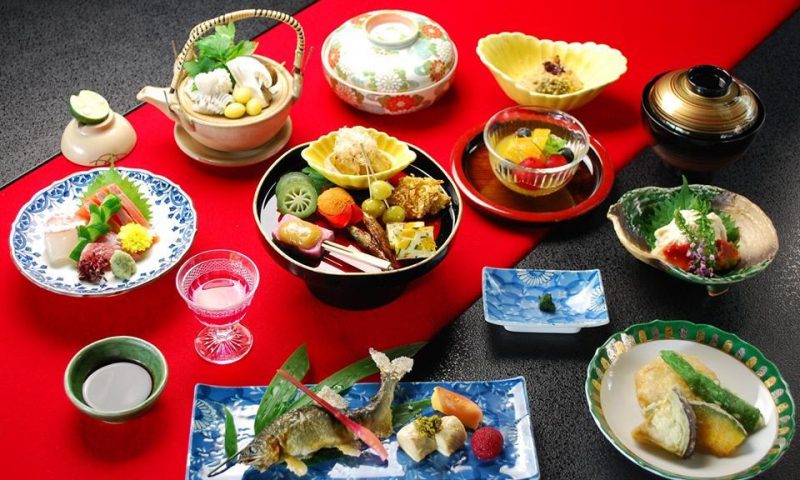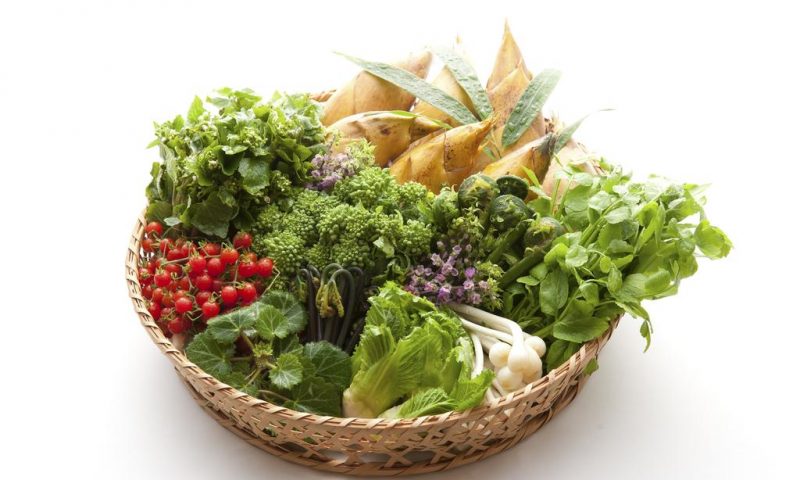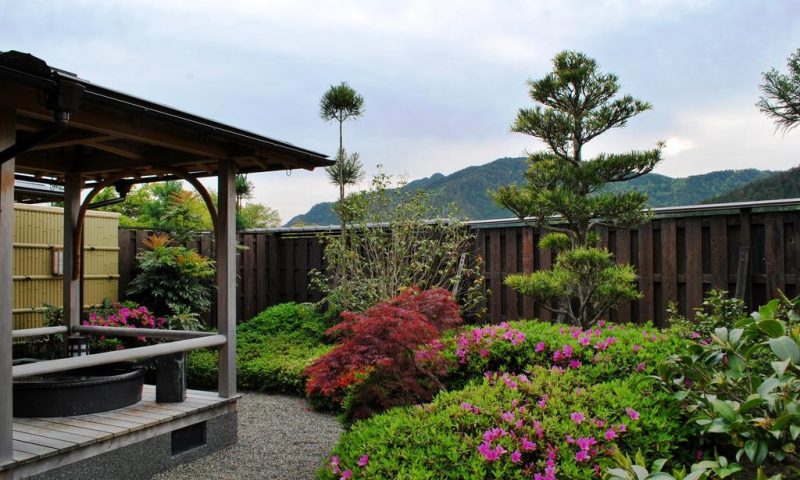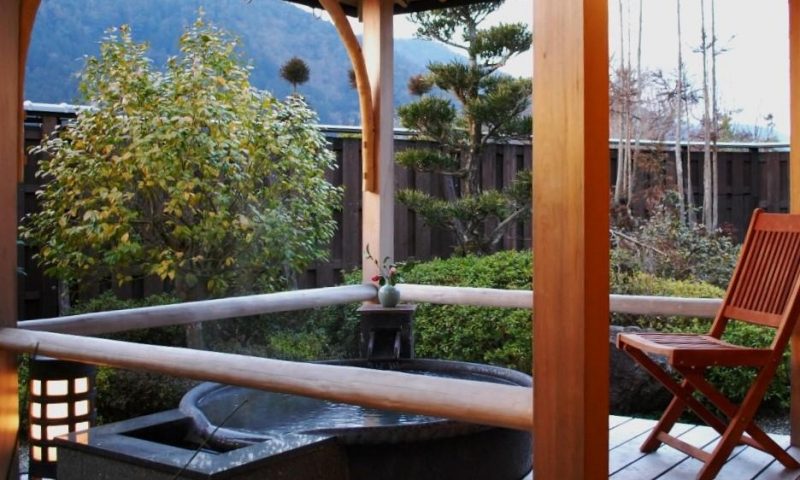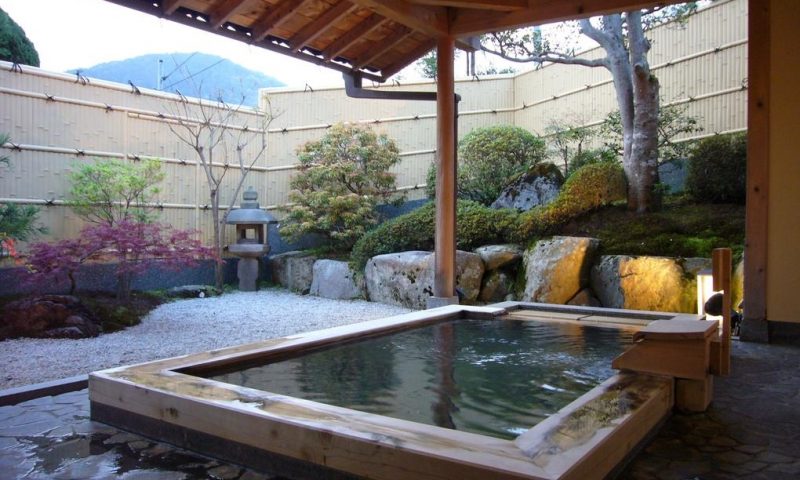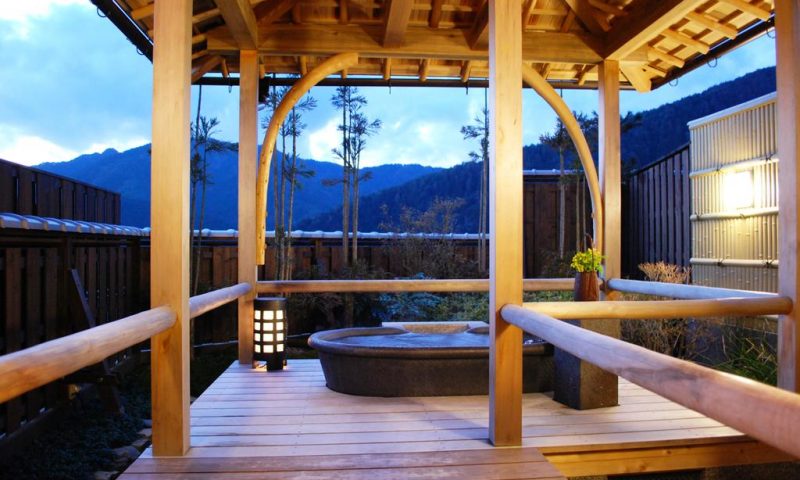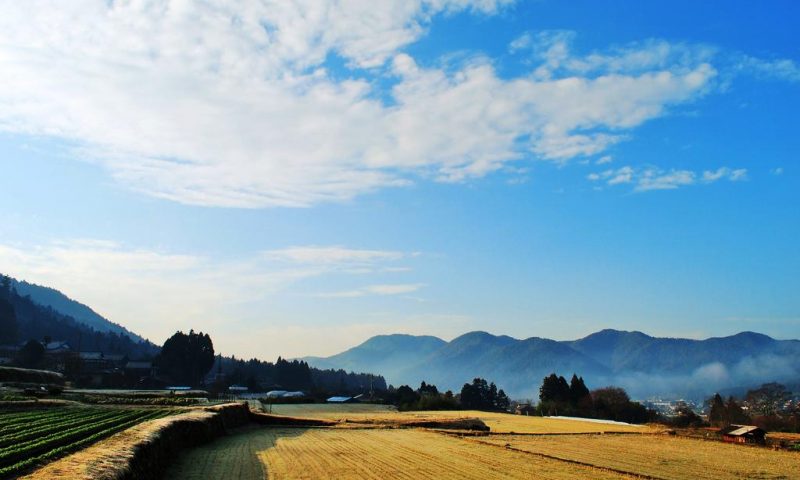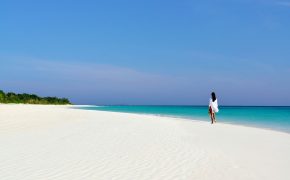Seryo is a Ryokan located within the naturesque countryside of Ohara, Kyoto. Spend a tranquil moment in the peaceful atmosphere of Ohara after sightseeing through the hustle and bustle of Kyoto City. Seryo accommodates you with a total of 9 Japanese, Western or Japanese-western type guestrooms all facing the beautifully landscaped Japanese garden. Providing relaxing hospitality to all our guests.
Our two spacious and luxurious Japanese-style rooms can accommodate up to five guests. From the open-air baths overlooking Ōhara’s beautiful mountains, one can enjoy the hot springs while gazing at the setting sun.
SPRINGS
Melt away your travel fatigue in the natural hot springs of Ohara surrounded by the naturesque tranquility of the county mountains. Good for neuralgia, muscle pains, arthritis and other joint pain, shoulder pains, motor paralysis, stiff joints, bruising, sprains, chronic indigestion, hemorrhoids, circulation, rehabilitation and fatigue.
The hot springs of Ohara are dug up in the north eastern valleys of Kyoto. 1175 meters in depth pushing out an impressive 120 liters per minute at 27.9 °C.
The hot springs are rich in Natrium ions and Hydrogen carbonate ions which are effective for beautiful and healthy skin.
The downcast waters contain radon measurements of 25 (x10 – 10 Curies/ kg). Nearly skimming the standard level of radioactivity in water which is 30 (x10 – 10 Curies/ kg). This kind of hot spring is rare to find in the Kansai region.
The clear and colorless waters, abundant in healthy elements are mild on the skin and great for relaxing and rejuvenation after surgery or sickness, breaking a bone and external wounds.
This mineral hot springs will make you feel refreshed and leave you with soft, smooth skin. Also, the ph level is at a minimal 8.7. Along with that and other effective substances such as Natrium and mineral ions, feel beautiful in your freshly pampered skin. You can expect the best of this rare hot springs effective for sensitive skin and treatment dug up from 1175 meters below in the hilly grounds of Kyoto.
FOOD
Enjoy the best of Seryo’s prided vegetable Kaiseki cuisine prepared with seasonal Kyoto harvested vegetables, Home-grown vegetables and mountain vegetables. Together with specially selected locally-brewed Kyoto Sake, experience a little taste of heaven on earth.
SOSAIMI KAISEKI
Enjoy the best of Seryo’s prided vegetable Kaiseki cuisine prepared with seasonal Kyoto harvested vegetables, Home-grown vegetables and mountain vegetables. Together with specially selected locally brewed Kyoto Sake creates a little taste of heaven on earth.
KUROGE JAPANESE BEEF
Our specially selected domestic Kuroge Beef Shabu-shabu hot pot is healthy and a popular choice among women.
KYOTO SAKE & WINE
Together with specially selected locally-brewed Kyoto Sake, experience a little taste of heaven on earth.
BREAKFAST
We have prepared a healthy breakfast menu using boiled tofu from the famed tofu restaurant of Shimogamo in Kyoto city, along with fresh vegetables.
HINASATO RESTAURANT
Rejuvenate yourself with the sound of the trickling stream and natural breezes on the porch of Hinasato. On warm days you can enjoy breakfast outside on the porch. Inside Seryo, our prided spacious wooden hall is available if you’re travelling in larger groups.
SANZEN-IN TEMPLE
Sanzen-in temple, also known as Kajii goten, is one of the 5 aristocratic temples of the Tendai sect of Buddhism. Saicho, a famous Japanese Buddhist monk who founded the Tendai sect of Buddhism built a small temple on mount Hiei after the war of onin and moved to Ohara.
Using the most of the natural hilly landscape, you can find a small hut mainly used for Buddhist services and enjoy a relaxing walk around two beautiful Japanese gardens built around large ponds. The Shuheki-en and Yusei-en gardens.
The main temple or paradise of peacefulness lies in the garden of Yusei-en surrounded by moss and beautiful Japanese cedar and maple trees. The ceiling of the hall that houses the Buddha is famous and is structured in an arch shape called “Funazoko-kei” which means the shape of a boat floor.
The artwork of two bodhisattva sitting on each side of the Amida Buddha called “Honzon Amida nyorai” is a famous piece you can find within. If you wish, you are allowed to write a copy of the Sutra.
JAKKO-IN TEMPLE
Jakko-in temple is a nunnery located up the stone path in the opposite direction of Sanzen-in temple from the Ohara bus terminal. Through the gates you will find the beautiful garden and structures of the main temple and study.
The Migiwa pond and garden next to the main temple was depicted in the Japanese folktale “The tale of Heike” and is famous for its mysterious structure. The garden faces frontward from any angle.
HOSEN-IN TEMPLE
A popular temple for its illumination events, originally built as a sub-temple built as an announcement hall of Shorin-in temple. With a beautiful view of mountains in the distance, a bamboo grove in arms reach and surroundings of short trees and bushes, take one step out from the sliding paper doors of the temple and feel like you’ve entered into a picture frame.
The beautiful garden that expands right before your eyes is especially magnificent in the fall with the firing colors of the autumn foliage. The famous ceiling of the hallway is known as “Momoyama no Chi tenjo” (The Momoyama ceiling of blood).
This is where the memorial service took place for the hundreds of men who took their own lives with their own swords at the battle of Fushimi Castle. Admission includes a serving of Matcha green tea and sweets. Sit back and enjoy a relaxing time at Ohara. Light up events take place in the spring and fall. Located 3 minutes on foot from Seryo.
JIKKO-IN TEMPLE
Located just north of Sanzen-in temple. Jikko-in was constructed by Jikaku Enin (Disciple of Saicho, founder of Tendai sect) in purpose of practice Buddhist services and ceremonies with music and melody, a ritual he had brought back from China.
Within the hall you can find instruments used in the study of musical chanting rituals a reproduced picture of 36 poetic genius of China. To the west of the prayer hall, you can find Kyurikakuin-teien, a garden landscaped for a relaxing walk around the pond.
Here you can find a rare type of cherry blossom that buds in October and blooms throughout the fall and winter until the spring. Appreciate the best of fall and spring with the beautiful Keishin-en garden and pond.
RAIGO-IN TEMPLE
Just up along the Rogawa-river outside Sanzen-in temple, you will find an old temple gate and the entrance to Raigo-in temple. A historical location of Buddhist chants and melodies in Ohara believed to be the origin of Japanese folk songs.
Commonly known are Joruri, a type of sung narrative accompanied by Shamisen commonly heard in Japanese puppet theatre, Yokyoku, vocal music used in Noh theatre and Minyo another type of Japanese folk song usually describing tales about the lifestyle of common people in other regions.
Every Sunday from 1:00pm, you can experience the authentic ritual of Buddhist chanting and melody. Here in the relaxing main temple, you can also find the rare wooden sculptures of Yakushi, Amida and Shaka, the 3 gods of Buddha plated with Japanese lacquer and gold leaf made during the Fujiwara reign between approx. 1200 - 1300.
AMIDA-DERA TEMPLE
The dojo hall of Myoho Buddhist prayer was founded by the Buddhist saint, Mokujiki-Shonin Tansei in 1609. The main Buddha’s head piece was made by Tansei himself.
You can also find the cave where the body of Tansei is preserved in a Sokushin Jobutsu method. (A Shingon tradition where it is believed that one becomes Buddha in its present physical body.) The sitting Amida Buddha figure is considered a significant national preservation.
JAPANESE PAPER: MOTOSHIRO
The store itself is quite spacious and has an assortment of small souvenirs and gifts displayed in aisles and on the walls. In the back, there is a selection of hand-made “Washi” (Japanese paper) with carefully chosen trim to decorate the edges.
Just beside the store, there is a small workshop where you can try your own hand at making Japanese Washi yourself. The process is quite simple and doesn’t take up too much time. Once you’re finished, you have your own original piece which you can take home right away.
They wrap it up in a nice little package for you and its lots of fun! Even big time Hollywood star Robin Williams had dropped by this little shop to get his hands-on experience making Washi. Give it a try, you won’t be disappointed!
KOBO AI NO YAKATA
“Ai-zome” (Indigo dye), an old traditional technique from ancient Japan, is the process of fermentation of natural lye which is known as “Japanese Indigo Dye” or “Japan blue”. Unlike fabrics that are manufactured with chemical dyes, the authentic indigo dyed fabric does not fade in the wash.
In fact, the more you wash the fabric, the indigo dye will soak deeper into the threads which make it tougher and long lasting. Not only that, indigo textiles are affective for repelling unwanted bugs, so it’s great for children. The popularization of Japan Blue continues to spread across the country.
RAKU-YAKI & ASHIYU
“Raku-yaki” (Easy pottery) is a great hands-on experience and one of the most popular activities with school kids visiting on field trips. There are over 30 different ready-made pottery pieces you can choose from and you can paint and design it with your own creative ideas.
The glazing and baking process is all handled by the staff. It takes roughly 10 minutes to bake in the kiln, and you can take it home on the spot. It makes a great souvenir, and a wonderful memory of your trip you can cherish forever. Enjoy a nice relaxing foot bath and a refreshing drink in the café while waiting for your pieces to bake.
